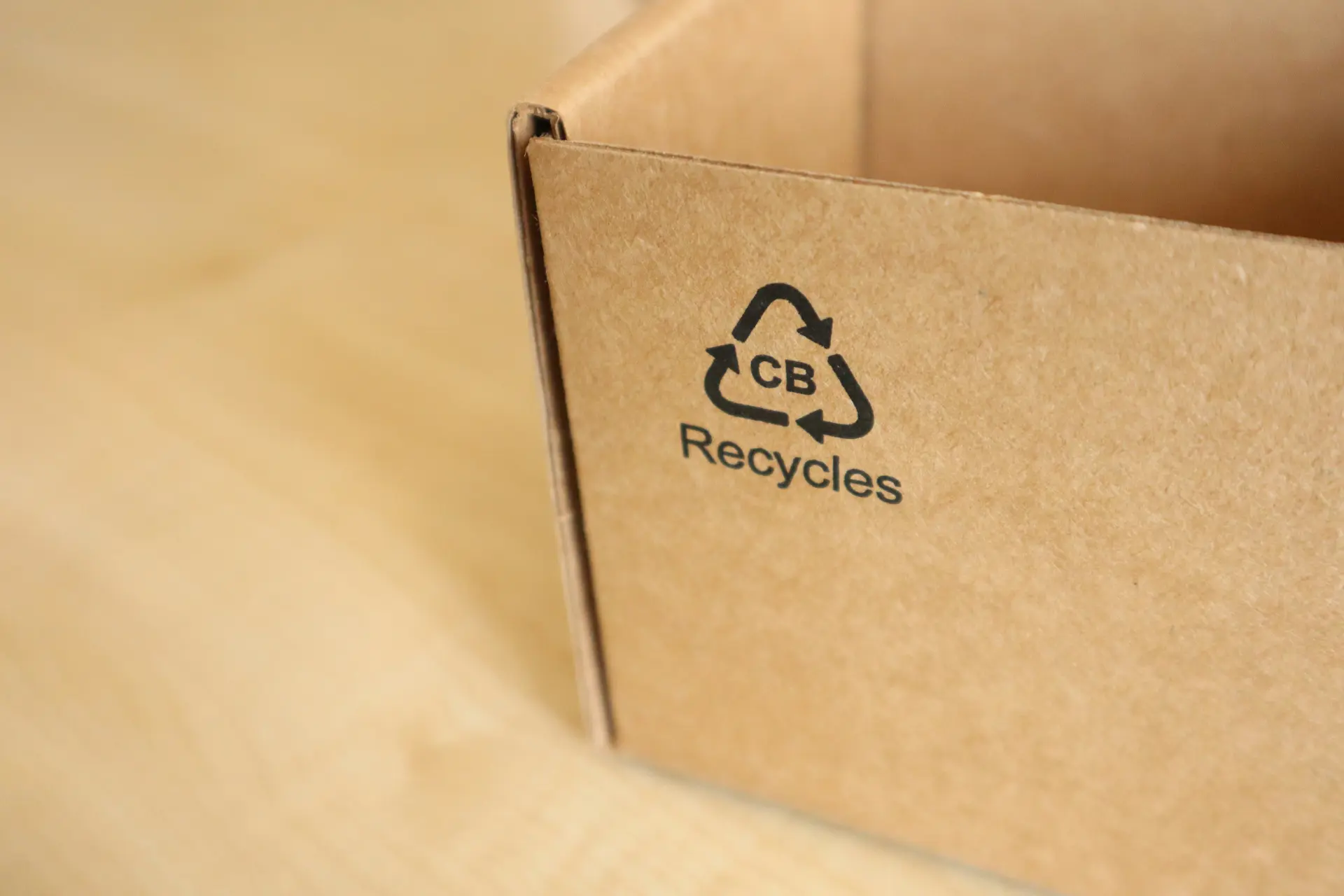What are Extended Producer Responsibility Guidelines?
Extended Producer Responsibility (EPR) is an environmental policy approach that places the responsibility for a product’s entire lifecycle on the producer, including its post-consumer stage. In simple terms, EPR ensures that companies that manufacture, import, or sell goods take accountability for what happens when those goods become waste.
Producers are often required to finance or manage the collection, sorting, recycling, or safe disposal of their products and packaging. This can include setting up recovery schemes, funding recycling systems, or reporting accurate data about the materials used in their packaging.
The ultimate aim is to encourage companies to design more sustainable products that use fewer resources and can be recycled or reused easily. By doing so, EPR helps reduce waste, conserve materials, and promote a more responsible approach to product design and distribution.
Why EPR Matters in Today’s Circular Economy
EPR plays a crucial role in driving the circular economy, where materials are kept in use for as long as possible instead of being discarded. Traditional linear production models follow a “take, make, dispose” pattern, which contributes to waste accumulation and resource depletion. The circular economy, supported by EPR, aims to reverse this by promoting reusability, recyclability, and resource recovery.
By adopting EPR principles, producers are encouraged to consider the environmental impact of their products from design through to disposal. This shift reduces pressure on local waste management systems, lowers carbon emissions, and helps build a more sustainable business model.
The Role of EPR in Sustainable Packaging and Waste Reduction
Packaging waste is one of the largest environmental challenges of our time. EPR guidelines are designed to make producers take ownership of the waste their packaging creates. These guidelines encourage manufacturers and retailers to minimise unnecessary packaging, replace non-recyclable materials, and clearly label products to support proper disposal.
By following extended producer responsibility guidelines, companies can significantly reduce waste and align with global sustainability targets. This approach also supports brand reputation by demonstrating a genuine commitment to environmental stewardship.
The Purpose and Scope of EPR Guidelines
EPR guidelines provide a framework for how producers should meet their environmental obligations. They set out how companies must handle the waste generated by their products, which materials fall under regulation, and how to collect, report, and verify data accurately.
The guidelines typically cover packaging, electronic waste, batteries, and sometimes textiles or single-use plastics. Their main purpose is to ensure producers play a direct role in reducing the environmental impact of their products and materials, rather than shifting the responsibility to local authorities or consumers.
Who Needs to Comply with EPR Guidelines?
EPR obligations apply to a wide range of businesses. You are likely affected if you:
- Manufacture or produce goods for sale
- Import goods or packaging into a regulated market
- Sell products under your own brand
- Operate as an online marketplace or distributor
If your organisation places packaging or products on the market that could become waste, even indirectly, you are likely to have EPR obligations. Identifying this early is essential for proper compliance planning.
Common Materials and Products Covered Under EPR
Although EPR schemes differ by region, they typically cover:
- Plastic, paper, glass, and metal packaging
- Electrical and electronic equipment
- Batteries and accumulators
- Textiles and clothing
- Single-use consumer items
Each category has its own reporting requirements, recycling targets, and cost responsibilities. Understanding these distinctions is critical for compliance.
Global EPR Frameworks and Regional Variations
How EPR Differs Across Regions (UK, EU, US, and Beyond)
EPR implementation varies widely across the world.
In the United Kingdom, the new EPR scheme for packaging requires producers to bear the full net cost of managing packaging waste from 2025 onwards. Companies must report detailed data on the packaging they supply and pay fees based on recyclability and material type.
In the European Union, EPR has been established for years under the Waste Framework Directive. The EU continuously updates these policies to promote recycling, reduce waste exports, and achieve ambitious sustainability goals.
In the United States, EPR is handled at the state level. Some states, such as Oregon, Maine, and California, have introduced their own packaging EPR laws. Others are expected to follow suit, resulting in a fragmented but growing regulatory landscape.
Global businesses must therefore stay alert to regional differences and manage compliance in multiple jurisdictions simultaneously.
Key Legislations and Regulatory Bodies
Several significant frameworks and authorities govern EPR compliance:
- UK EPR for Packaging Regulations (2024–2025)
- EU Packaging and Packaging Waste Directive
- Germany’s VerpackG Act
- France’s AGEC Law
- California’s Plastic Pollution Prevention and Packaging Producer Responsibility Act
These are overseen by agencies such as the UK Environment Agency, ADEME in France, and the European Commission, each enforcing reporting accuracy and financial contributions to recycling systems.
The Evolution of EPR Guidelines Worldwide
Over time, EPR has evolved from voluntary initiatives to mandatory environmental requirements. Governments are now expanding EPR obligations to include new product categories such as textiles, furniture, and construction materials.
This evolution demonstrates a growing recognition that producers must take responsibility for the environmental footprint of their entire supply chain. For businesses, it means compliance is no longer optional. Instead, it is a fundamental part of sustainable operations and corporate accountability.
The Core Principles Behind EPR Guidelines
Producer Responsibility for End-of-Life Management
At the heart of EPR is the principle that producers are responsible for what happens to their products after their use. This includes financing or managing collection, sorting, and recycling systems, either individually or collectively through a Producer Responsibility Organisation (PRO).
This principle ensures waste is treated responsibly and reduces the burden on local councils and taxpayers.
Transparency and Data Reporting Requirements
Transparency is one of the key expectations within EPR compliance. Businesses must accurately record and report data about the products and packaging they place on the market. This often includes information on:
- Material types and weights
- Product volumes by category
- End-of-life management (collection, recycling, or recovery)
Accurate reporting is vital to maintaining trust with regulators, ensuring fair cost distribution, and achieving national recycling targets.
Design for Recyclability and Sustainable Product Lifecycles
EPR encourages eco-design, where producers design products with their end-of-life in mind. By using fewer materials, increasing recyclability, and reducing unnecessary packaging, companies can lower compliance fees and contribute to environmental goals.
Sustainable design also improves brand value, as customers increasingly prefer products that are responsibly made and easy to recycle.
Collaboration Across the Supply Chain
Successful EPR compliance depends on cooperation between all stakeholders. Manufacturers, suppliers, distributors, and recyclers must work together to share accurate data and optimise processes.
This collaboration leads to better packaging innovation, greater recycling efficiency, and stronger sustainability outcomes across industries.
Key Compliance Steps for Organisations
Understanding Your Obligations as a Producer
The first step is determining whether your business qualifies as a “producer.” This requires analysing your role in the supply chain, identifying where your packaging enters the market, and understanding the regulatory frameworks of each country where you operate.
Once confirmed, your business should register with the relevant environmental authority or compliance scheme.
Collecting and Managing Packaging Data
Data collection is at the core of EPR compliance. Businesses must gather details about every piece of packaging used, including its material type, weight, and recyclability. This process is complex and often involves multiple departments such as procurement, design, and marketing.
A robust data management system ensures you have accurate records to support your reports, making audits faster and less stressful.
Registering and Submitting EPR Reports
After gathering your data, you must register and report through the appropriate national system. Reports must include verified figures that align with official requirements. Missing deadlines or submitting inaccurate information can lead to penalties, increased fees, or reputational harm.
Working with Compliance Schemes and PROs
To simplify the process, many companies work with Producer Responsibility Organisations (PROs) or compliance schemes. These organisations handle much of the administrative work, such as registering producers, collecting fees, and coordinating waste recovery.
However, even with third-party support, producers remain legally responsible for the accuracy of their data and payments.
Challenges Businesses Face with EPR Compliance
- Complex Reporting and Data Collection: For most organisations, EPR reporting can feel overwhelming. Data may be spread across different systems, teams, and formats, making consolidation difficult. Without automation or integrated tools, the risk of human error increases, which can lead to non-compliance.
- Managing Multi-Market Regulations: International businesses must manage varying EPR requirements in multiple markets. Each country may have its own submission deadlines, material classifications, and fee models. Coordinating all of this manually consumes time and increases the likelihood of mistakes.
- Keeping Up with Evolving Legislation: Environmental legislation is evolving rapidly. Governments regularly update recycling targets, reporting formats, and scope definitions. Companies that rely on static spreadsheets or manual tracking struggle to keep pace with these frequent changes.
- Balancing Compliance with Sustainability Goals: Businesses often view EPR as a compliance burden, but it should be seen as an opportunity. By aligning EPR compliance with sustainability objectives, organisations can demonstrate leadership, reduce waste, and build stronger brand trust. The challenge lies in achieving both efficiently.
How 4Pack Simplifies EPR Compliance
Automating Data Capture and Reporting
4Pack offers a powerful digital solution that automates packaging data collection and EPR reporting. It integrates seamlessly with your internal systems, ensuring data accuracy, consistency, and full traceability. This automation saves valuable time and reduces human error, allowing your team to focus on higher-value work.
Centralising Packaging and Product Information
With 4Pack, all your packaging and product data resides in one central location. You can access specifications, artwork, supplier information, and compliance data in real time. This visibility makes collaboration easy across departments and markets, ensuring everyone works from the same verified information.
Reducing Errors and Ensuring Audit Readiness
4Pack’s validation tools highlight inconsistencies or missing data before submission of reports, reducing the risk of fines or rework. The system also keeps a full audit trail, providing evidence of compliance in case of an inspection or regulatory review.
Real-World Results: How 4Pack Helps Brands Stay Compliant and Sustainable
Many well-known consumer brands and packaging manufacturers use 4Pack to manage their EPR obligations. Clients benefit from reduced reporting time, improved data quality, and a more sustainable approach to packaging management. By centralising compliance processes, 4Pack helps businesses maintain transparency and meet evolving regulatory demands with confidence.
Book a Demo with 4Pack
See How 4Pack Streamlines EPR Compliance
If your business struggles with data management or complex reporting, 4Pack can help. A live demonstration will show how quickly you can automate compliance tasks and generate accurate EPR submissions.
4Pack provides the digital foundation your teams need to stay compliant and agile in a changing regulatory landscape. With intuitive dashboards and real-time insights, your organisation can make informed decisions and stay prepared for future EPR updates.
Take control of your compliance strategy now. Book your free demo with 4Pack today and see how you can transform EPR compliance from a challenging obligation into a strategic advantage.
The Future of EPR and Sustainable Business Practices
EPR is a key driver in the global movement toward sustainability. As more products and materials come under regulation, producers must adapt by integrating compliance into their business models and operations. This proactive approach ensures long-term success and resilience.
Organisations that adopt strong compliance strategies gain an edge. They avoid penalties, streamline internal processes, and demonstrate environmental responsibility, which strengthens consumer trust and brand loyalty.
Final Thoughts: Turning EPR Challenges into Opportunities with 4Pack
EPR compliance does not have to be a burden. With the right digital tools, it can become a foundation for innovation and sustainability. 4Pack empowers companies to manage packaging data, meet regulations, and contribute to a more circular future – all while improving operational efficiency.



